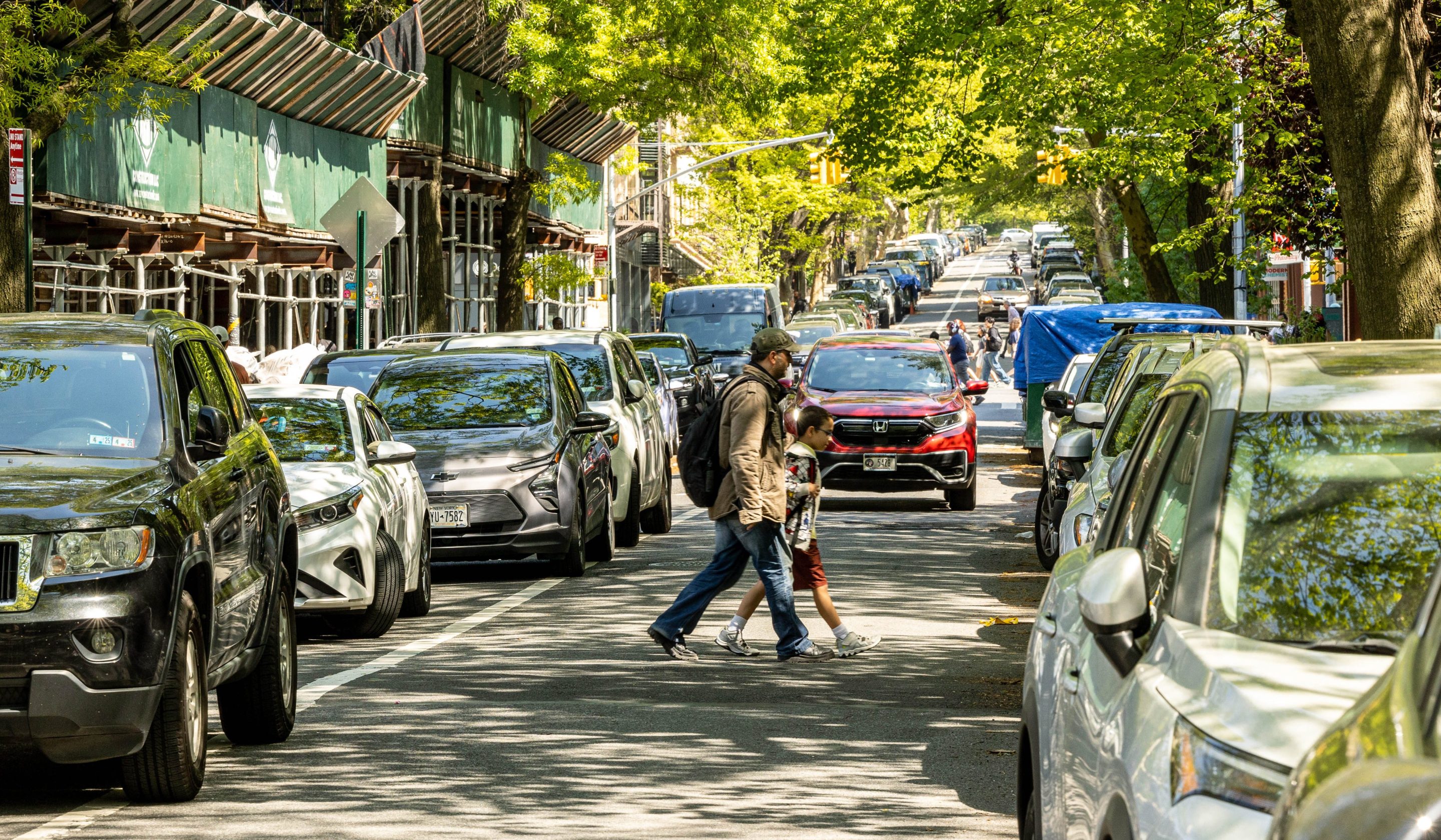The only jaywalking the NYPD is doing is on the truth.
Police Department officials have claimed cops' ticketing of "jaywalking" is part of "precision policing" in neighborhoods where there are high rates of traffic violence, but a Streetsblog analysis found little connection between pedestrian injuries and the racially biased summonses handed out by cops for the soon-to-be-eliminated violation.
Despite the NYPD's assertion, some of the neighborhoods where cops wrote the most jaywalking tickets this year have had very few injuries. And some of the areas with many injuries had very few jaywalking summonses.
Take the 115th Precinct, covering Jackson Heights and East Elmhurst. It's not even in the top 10 areas for pedestrian injuries. But cops wrote the most jaywalking tickets there — 70 — between Jan. 1 and Sept. 30.
Meanwhile, the most dangerous precinct for people on foot, the 109th Precinct in neighboring Flushing had 70 percent more injuries (157) but 89 percent fewer tickets (just eight).
Two neighboring precincts in Brooklyn had similar gaps: The 61st Precinct in southern Brooklyn had 128 pedestrian injuries in the first three-quarters of 2024 — but only five jaywalking tickets. Meanwhile, Borough Park's 66th Precinct had 130 injuries but only two tickets for improperly crossing the street.
And precincts with high numbers of tickets often had relatively low injury numbers.
For instance, cops in the 84th Precinct in Brooklyn Heights wrote the second-highest number of summonses — 53 — in an area with just 42 injuries. And cops at the 28th Precinct in Harlem wrote 50 tickets, despite having just 26 pedestrian injuries.
Nonetheless, the NYPD claimed during testimony against a City Council effort to legalize "jaywalking" that it writes jaywalking tickets focused on areas of high pedestrian injuries. In fact, the Council was moved to act because officers have been writing summonses in a racially biased manner that overwhelmingly targeted Black and Brown New Yorkers.
"There’s precision policing taking place," NYPD Transportation Bureau Deputy Chief Thomas Alps said during a hearing on the bill in June, specifically citing the 115th Precinct as evidence even though there are much more dangerous areas of the city for pedestrians.
"They’re looking at data, they’re understanding it, they’re saying, ‘There’s fatalities happening here, there’s pedestrians getting struck and injured, this is where we need to do it,’" Alps said of the 115th.
Advocates have long disagreed that there is any connection between street safety and NYPD enforcement of jaywalking.
"Ticketing for jaywalking has never improved pedestrian safety and never will," said Philip Miatkowski, senior director of Research and Policy of Transportation Alternatives, which backed the recent law change. "Instead of criminalizing walking, the city should protect New Yorkers by redesigning streets to slow drivers and increase pedestrian visibility — especially in areas with high pedestrian fatalities."
The narrative of legal jaywalking equals danger was echoed by conservative politicians during the Council hearing, and now also some media outlets. In this recent Eyewitness News story about a 13-year-old girl killed by a driver, the anchor cued up the piece by asking, "Will it get worse, now that the city has legalized jaywalking?"
A little more than one-third of pedestrian deaths over the last five years, or 34 percent, were people who were hit by drivers while crossing "mid-block" or against the light, the Department of Transportation's First Deputy Commissioner Margaret Forgione told the Council during the June hearing.
But that means that most people who were killed by cars weren't jaywalking, and intersections — were pedestrians are supposed to cross — are notoriously dangerous, accounting for 59 percent of injuries for people on foot and 77 percent of fatalities, according to DOT.
There has been a well-documented overlap between the summonses and race, with more than nine in ten people ticketed being Black or Hispanic, Streetsblog has reported, in a city where it's so widespread, that we're literally known for walkin' here.
Other jurisdictions have legalized or decriminalized jaywalking in recent years, but there is little research available so far on whether that has made streets more dangerous for pedestrians as opponents claim.
Virginia legalized walking in the street in late 2020, which didn't have a measurable effect on pedestrian safety, according to state data tracked by the national walkability advocacy organization America Walks.
Similar measures passed in the years since in Kansas City, Denver, and California, although Golden State Gov. Gavin Newsom initially vetoed the measure citing fears of pedestrian safety.
America Walks's Executive Director Mike McGinn noted that officials lean on anti-jaywalking laws to fault victims of crashes and divert attention away from poor street design.
"All too often it’s an opportunity for people in charge of the streets to blame victims of crashes, rather than taking responsibility for the streets they themselves designed."
NYPD's press office did not respond for comment.






